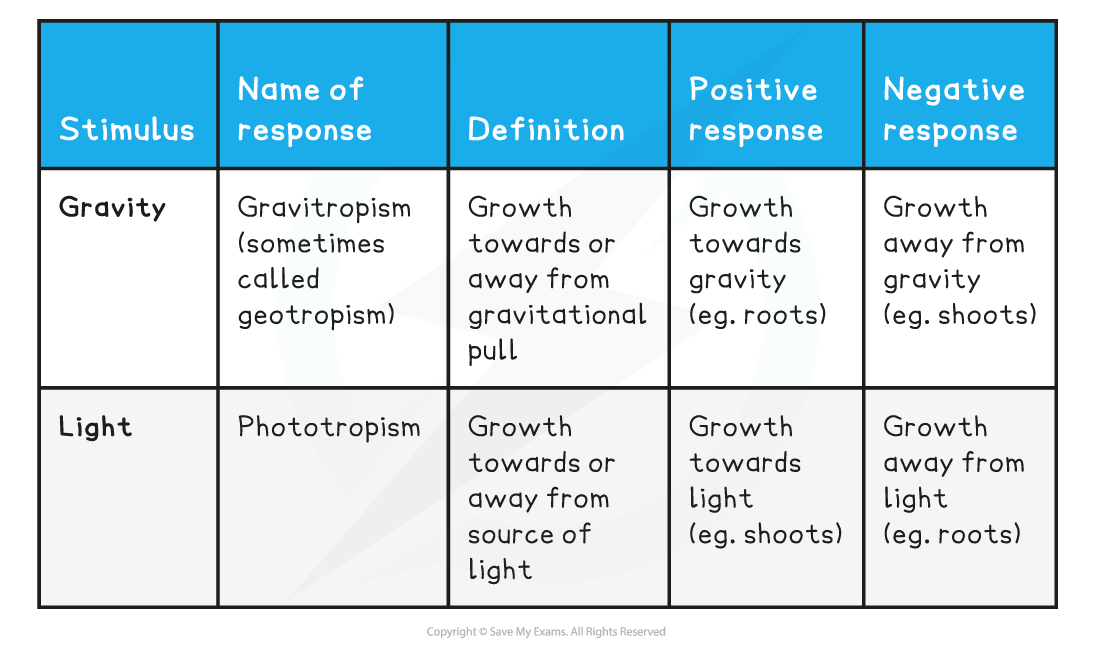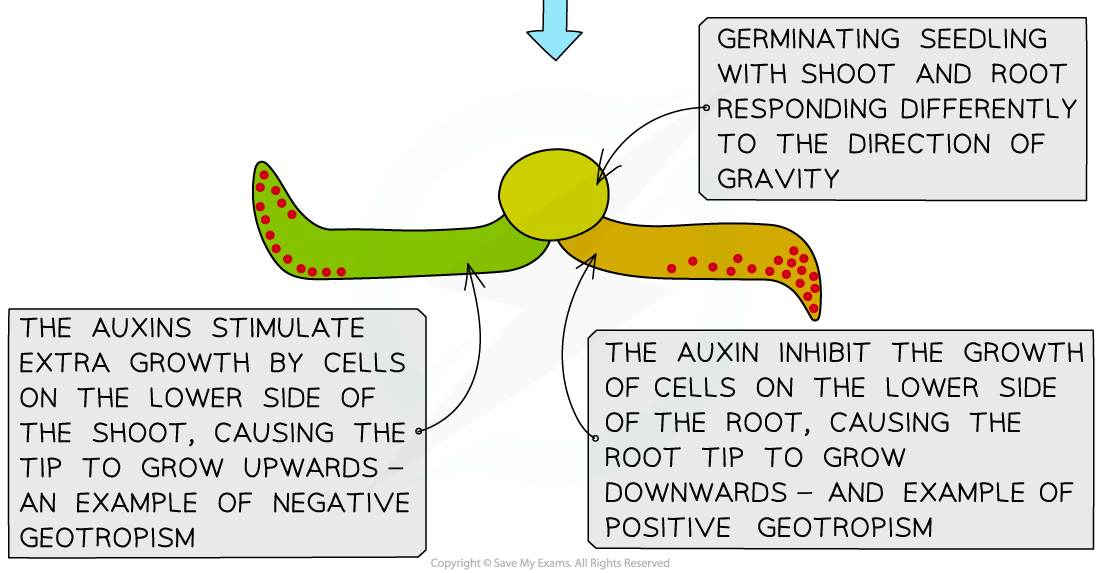- 翰林提供学术活动、国际课程、科研项目一站式留学背景提升服务!
- 400 888 0080
Edexcel IGCSE Biology: Double Science 复习笔记 2.10.3 Response to Stimuli: Plants
Edexcel IGCSE Biology: Double Science 复习笔记 2.10.3 Response to Stimuli: Plants
Response to Stimuli: Plants
- Plants need to be able to grow in response to certain stimuli
- For example, plants need to be able to grow in response to light, to ensure their leaves can absorb light for photosynthesis
- They also need to be able to grow in response to gravity, to ensure that shoots grow upwards and roots grow downwards
- The directional growth responses made by plants in response to light and gravity are known as tropisms
- A response to light is a phototropism and a response to gravity is a geotropism (or gravitropism)
- If the growth is towards the stimulus, the tropism is positive and if the growth is away from the stimulus, the tropism is negative
- As shoots grow upwards, away from gravity and towards light (so that leaves are able to absorb sunlight), shoots show a positive phototropic response and a negative geotropic response
- As roots grow downwards into the soil, away from light and towards gravity (in order to anchor the plant and absorb water and minerals from the soil), roots show a negative phototropic response and a positive geotropic response
Geotropism and Phototropism Table

Auxins
- Plants produce plant growth regulators (similar to hormones in animals) called auxins to coordinate and control directional growth responses such as phototropisms and geotropisms
- Auxins are produced in the tips of the shoots and the roots; they diffuse to the cells below the tips and have the following effects:
- In the shoots, auxins promote cell elongation (growth); more auxin = more cell elongation = more growth
- In the roots, auxins inhibit cell elongation (growth); more auxin = less cell elongation = less growth
- The distribution of auxin in the shoots is affected by light and gravity, whereas the distribution in the roots is primarily affected by gravity alone
- If a shoot or root is placed on its side, auxins will accumulate along the lower side as a result of gravity; so the uppermost side has a lower auxin concentration
- In the shoots, the lower side grows faster than upper side (more auxin = more cell elongation), so the shoot grows upwards
- In the roots, the lower side grows slower than the upper side (as auxin inhibits cell elongation and growth in roots), so the root grows downwards
- Unequal distributions of auxin cause unequal growth rates in plant roots and shoots


The difference in the geotropic response of roots and shoots results from their different sensitivities to auxin
转载自savemyexams

最新发布
© 2025. All Rights Reserved. 沪ICP备2023009024号-1









